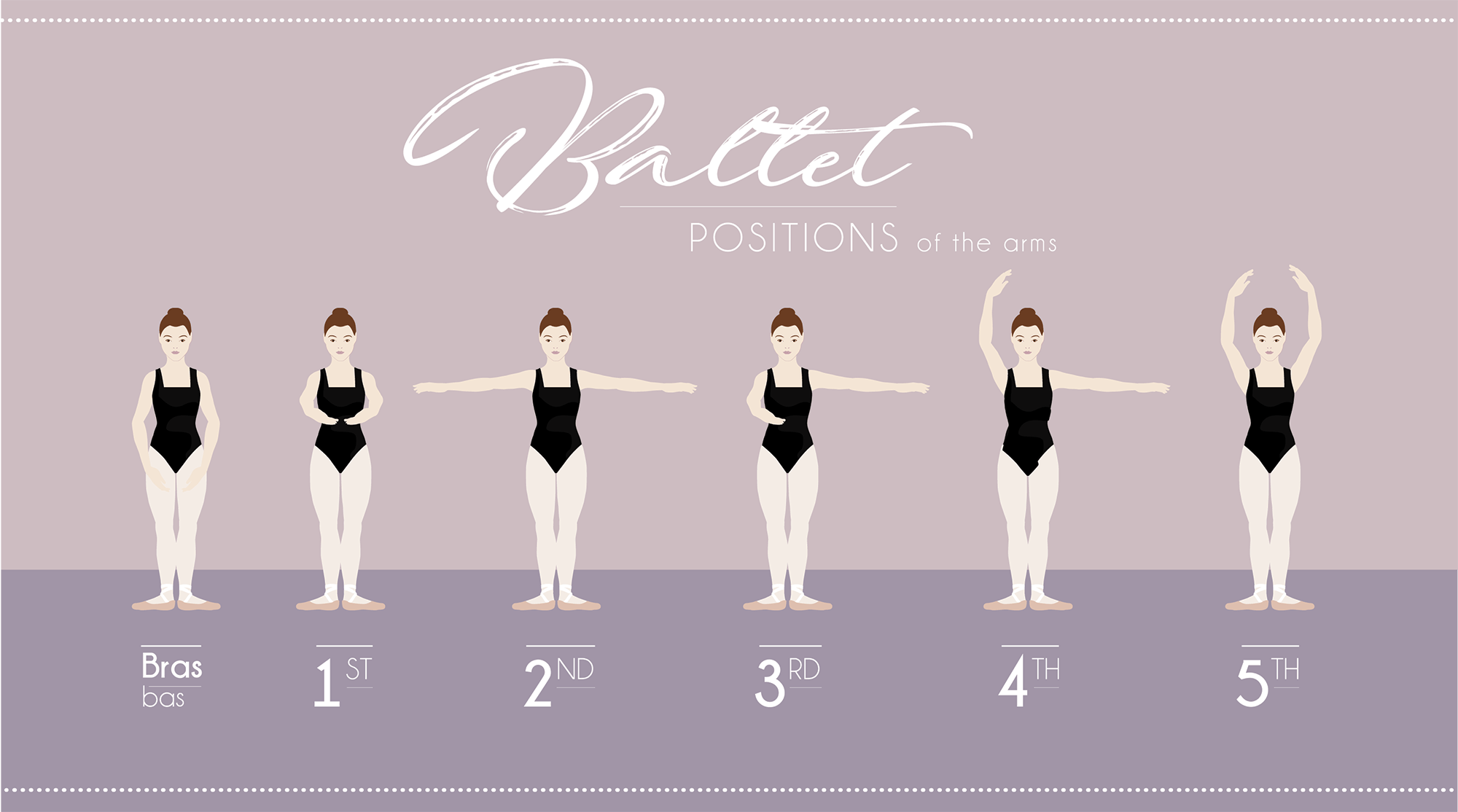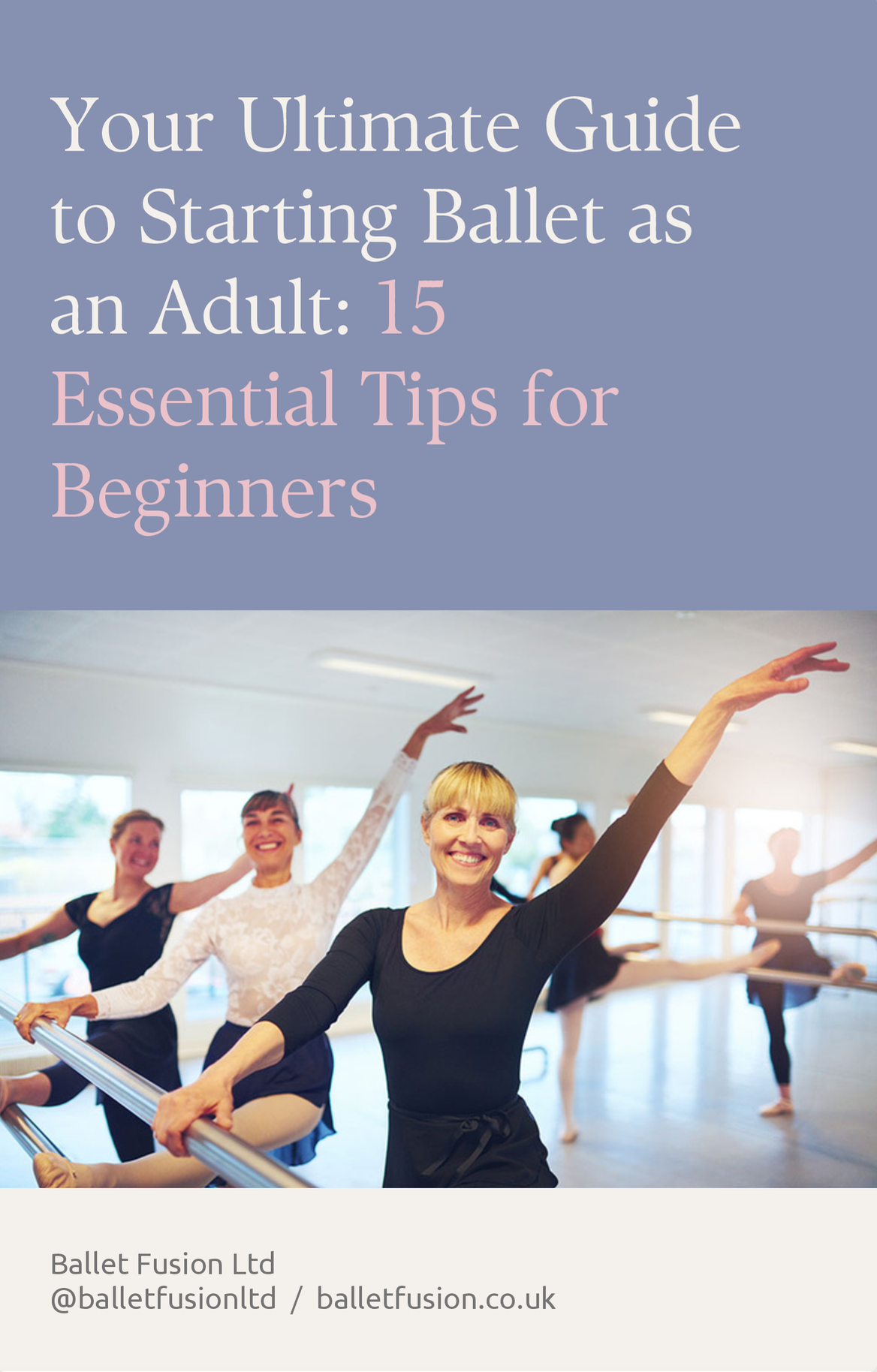Ballet Positions for Beginners
Basic Ballet positions - feet and arms
If you’re new to ballet, haven’t been for a while or thinking about starting a class, some of the positions and terms used by your teacher might have you a bit baffled.
We’ve listed some of the basic ballet positions with descriptions to get you started.
Just remember, don’t let the terms or positions intimidate you. Adult classes are generally very friendly and relaxed and your teacher will always demonstrate a position and sometimes translate into more simple descriptive language. If in doubt, ask. Teachers love to be asked questions and if you’re unsure, someone else in the class will be too so you’ll be doing them a favour by speaking up!
Basic Ballet Positions - The Feet
Let’s start with the feet. There are five basic positions worth remembering.
You might only use two or three in your first classes and adult beginners are never expected to put their feet in any positions that hurt or cause joint pain so be aware of how your hips, knees and ankles feel as you try these.
Top tip: When you look at a ballet dancer in one of these positions, it looks like they are turning their feet out from their ankles. Actually, the turn-out comes from the hips. Focus on turning out from your hips to take pressure off your knee and ankle joints.
First Position
Stand up straight with heels together and toes pointed outwards towards the corners or outer edges of the room. Only turn your hips and legs out as much as is comfortable.
Second Position
Stand up straight with feet hip-width apart, legs turned out from the hips. Toes pointing towards the corners or outer edges of the room.
Third Position
Keeping feet turned out, cross one foot in front of the other - joining your heel to the middle front or arch of the other foot.
Fourth Position
Start in third position and slide one foot forward creating a space of about 5 to 10in or so between your feet. Be careful of this one as it can twist or pull knee and ankle joints. If you feel any discomfort, turn your toes in towards the front more or don’t do the position.
Fifth Position
Like third position but the feet are crossed more, with the heel of one foot joining the other foot closer towards the big toe joint or ‘bunion bone’ as it’s often referred to.
Top tip: You might hear your ballet teacher say ‘Be careful not to roll your feet’. This means don’t let your feet roll forwards when turned out in any of the positions above. The best way to prevent this is to imagine you have a malteser under the inner arch of each foot. Don’t squash the malteser, keep your ankle muscles lifted to push your outer foot into the floor and keep your inner arches from rolling forward. Not sure what we mean? Go and grab a packet of maltesers. Just don’t blame us when you eat the rest of the packet. And don’t try it on cream carpet.
Basic Ballet Positions - Arms
The arms can be one of the most beautiful and expressive elements of a ballet so enjoy using your arms to feel the music and flow through positions.
Keep a straight body as you practice these positions but during exercises or dances, you might use them while you’re bending or moving your body.
Bra bas
This is the resting or preparatory position for arms in ballet. We often start and finish in bra bas. Standing up straight, let your arms hang down by your side then bring your hands in to almost meet at hip level, letting your elbows bend slightly. Arms should be gently rounded with shoulders relaxed.
First
From bra bas, lift your arms so that both hands are now in front of your belly button. Keep arms extended with a gentle bend at the elbow - just like you’re carrying a beach ball low down on your belly.
Second
From first position, open the hands to bring your arms out to the side. Keep that gentle bend in your elbows and let your palms face forward without drooping. Arms should be just in front of your shoulder line - like you’re ready to give someone a hug.
Fifth
Bring both arms up and your hands high above your head. Keep that gentle bend at the elbows. Don’t let the fingers touch and keep palms pointing down or slightly inwards. The trick with this one is to keep your shoulders down and as relaxed as possible to elongate your neck and prevent hunching or tension.
There are lots more positions so keep an eye on our blog posts for more in this series.
Our adult ballet fitness classes are held online seven days a week. Checkout our online adult ballet classes for more info.











